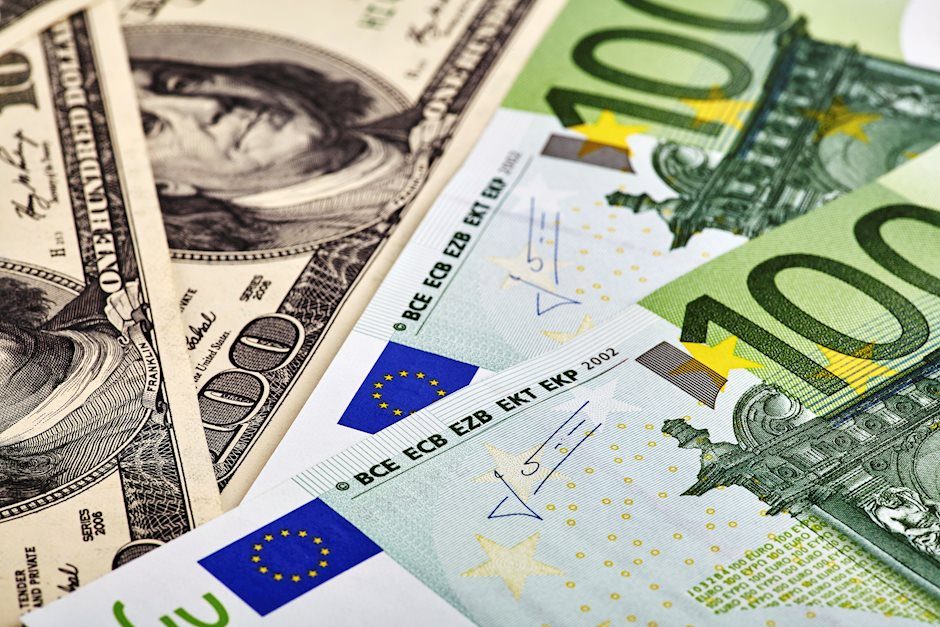EUR/USD finds floor to arrest pullback, but downside pressures remain
- EUR/USD found a foothold near 1.1050 on a quiet Monday.
- US markets were dark to kick off the trading week, bringing thin volumes.
- Key EU data this week threatens to get overshadowed by US NFP.

EUR/USD found a thin bid on Monday, kicking off the new trading week finding a foothold near 1.1050 as the Fiber tries to hang onto near-term gains. Markets kicked off Monday on a notably thin volume profile, with US markets shuttered for the Labor Day holiday. An extended weekend will see US markets return to the fold on Tuesday just in time to stare down the barrel of a heavy docket full of US labor figures throughout the rest of the week.
EU Retail Sales and Gross Domestic Product (GDP) growth figures are due later in the week, on Thursday and Friday, respectively. However, the big news for the trading week will be a slate of US labor figures, kicking off with Wednesday’s JOLTS Job Openings for July, which is forecast to hold steady at 8.1M MoM.
Thursday’s US ADP Employment Change for August is expected to bounce to 145K from the previous month’s 122K, but the key labor print from the US this week will be Friday’s US Nonfarm Payrolls (NFP) report for August. The US is expected to deliver a healthy print of 165K compared to the previous month’s 114K, and special attention will be paid to the release figures and any historical revisions as this represents the last round of NFP jobs numbers before the Federal Reserve (Fed) gathers on September 18 to deliver a hotly-expected opening volley in a new rate cutting cycle.
EUR/USD price forecast
Fiber managed to eke out an intraday bid on Monday, finding slim gains from the 1.1050 level after paring back for three consecutive trading days. EUR/USD popped into a 13-month high just above 1.1200 early last week, and a near-term pullback in Greenback flows sees bids scrambling to hold onto bullish chart paper.
The pair is still trading well north of the 200-day Exponential Moving Average (EMA) at 1.0845. Despite holding deep in the bull country, EUR/USD is still facing a steepening bearish pullback as shorts congregate targets just above the 50-day EMA at 1.0956.
EUR/USD daily chart

Euro FAQs
The Euro is the currency for the 20 European Union countries that belong to the Eurozone. It is the second most heavily traded currency in the world behind the US Dollar. In 2022, it accounted for 31% of all foreign exchange transactions, with an average daily turnover of over $2.2 trillion a day. EUR/USD is the most heavily traded currency pair in the world, accounting for an estimated 30% off all transactions, followed by EUR/JPY (4%), EUR/GBP (3%) and EUR/AUD (2%).
The European Central Bank (ECB) in Frankfurt, Germany, is the reserve bank for the Eurozone. The ECB sets interest rates and manages monetary policy. The ECB’s primary mandate is to maintain price stability, which means either controlling inflation or stimulating growth. Its primary tool is the raising or lowering of interest rates. Relatively high interest rates – or the expectation of higher rates – will usually benefit the Euro and vice versa. The ECB Governing Council makes monetary policy decisions at meetings held eight times a year. Decisions are made by heads of the Eurozone national banks and six permanent members, including the President of the ECB, Christine Lagarde.
Eurozone inflation data, measured by the Harmonized Index of Consumer Prices (HICP), is an important econometric for the Euro. If inflation rises more than expected, especially if above the ECB’s 2% target, it obliges the ECB to raise interest rates to bring it back under control. Relatively high interest rates compared to its counterparts will usually benefit the Euro, as it makes the region more attractive as a place for global investors to park their money.
Data releases gauge the health of the economy and can impact on the Euro. Indicators such as GDP, Manufacturing and Services PMIs, employment, and consumer sentiment surveys can all influence the direction of the single currency. A strong economy is good for the Euro. Not only does it attract more foreign investment but it may encourage the ECB to put up interest rates, which will directly strengthen the Euro. Otherwise, if economic data is weak, the Euro is likely to fall. Economic data for the four largest economies in the euro area (Germany, France, Italy and Spain) are especially significant, as they account for 75% of the Eurozone’s economy.
Another significant data release for the Euro is the Trade Balance. This indicator measures the difference between what a country earns from its exports and what it spends on imports over a given period. If a country produces highly sought after exports then its currency will gain in value purely from the extra demand created from foreign buyers seeking to purchase these goods. Therefore, a positive net Trade Balance strengthens a currency and vice versa for a negative balance.
Author

Joshua Gibson
FXStreet
Joshua joins the FXStreet team as an Economics and Finance double major from Vancouver Island University with twelve years' experience as an independent trader focusing on technical analysis.

















